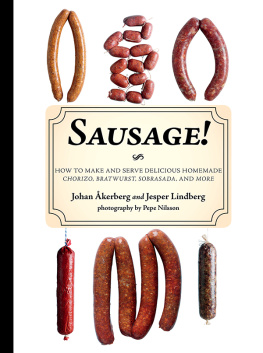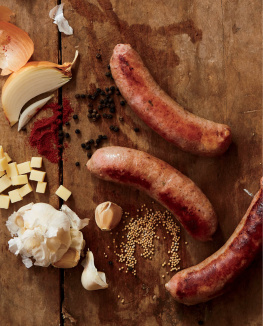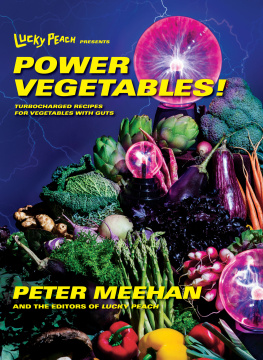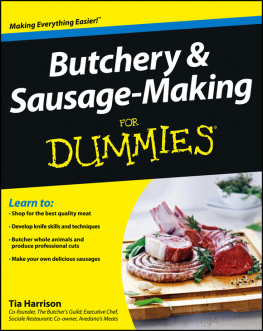Wurst Practices
GRILLING SAUSAGE
The disrespectful immolation of sausages over a hot grill is so commonplace as to be unremarkable. And, because sausage is delicious and forgiving, it usually tastes great even when cooked carelesslybut the innards are often drier than they should be, all because the cook is in thrall to the idea that browned sausage is all that matters. If you want to elevate your sausages with flame rather than relying on their hardiness to persevere through a heavy torching, then you will want to do this:
- Make a fire. Light a chimney full of charcoal and wait for the coals at the top to ash over and flames to subside. Dump the coals into the grill and arrange them for two-zone cooking, one side with about double the depth of coals as the other. Keep one area free of coals, so you have a place to drag the sausages should there be a flare-up.
- Set the grate over the coals, rub the grate with an oily rag, and let the coals burn down until you have medium (450F) and low (300F) heat zones. Place sausages over the medium zone and sear them, turning every 20 to 30 seconds, until they are marked on all sides and the casings have dried and begun to brown. Transfer to the cooler side of the grill for slower indirect cooking. Continue turning sausages until they are evenly brown and puffed. Slowly getting to browness is the surest way of knowing your sausage will be in good shape all the way through. When you see liquid bubbling within the casing or clear liquid simmering out of the ends, theyre ready to meet their maker; remove them from the heat and let them rest for a few minutes before eating.
- Many cooks think it wise to check the temperature of an in-process sausage with a digital thermometer, but we dont like to go and stab up our whole fleet. If you must be a nerd who knows the temperature of their sausage on the grill, do this: Before cooking, choose one lucky sausage and insert a roasting thermometer (the kind with an ovenproof wire connected to a digital box outside of the oven) through one end of the sausage into the middle of the meat. Set the alarm to beep at the desired cooking temp (145F for beef, 150F for pork, 160F for poultry), and fuggedaboutit.
BRAISING SAUSAGE
In many dishes there is tandem deliciousness: there is the meat and the vegetable (or condiment or starch), and they are both good but they are separate. Braising sausage with its accompaniments is like making an ouroboros of flavor: Deliciousness knows no end or beginning, textures are rapturously harmonized, ingredients are sublimated into a higher form. Our recommended process is this:
- Sear the sausages to firm up their casings and develop a little brown flavor, then remove them from the pan. In the same pan, saut aromatics in the sausage fat. You will want onions, definitely onions, more onions than you might immediately suspect you should use. Maybe some peppers or fennel or carrots and celery. Youll probably also want additional fat (see for inspiration on that front). Cook until they begin to brown but hold their shape, about 5 minutes over medium-high heat. Do not season them with more than a pinch of salt at this timeyou can correct the seasoning at the end.
- Tuck the sausages into the wilting aromatics. This would be the time to add a smothering-type ingredientrinsed sauerkraut, chopped or canned tomatoes, chopped apples, kimchi, etc. Add enough stock or water to submerge everything by inch. If you forgo kraut or tomatoes or another acidic addition, youll want to introduce a little acid in the mix. Use cider, beer, or wine for half of the stock, or a little splash of vinegar. This will help tenderize the sausage and balance the fat in the resulting dish. Cover and braise in a 300F oven for 2 to 3 hours, until the sausages are very tender. (Or set-it-and-forget-it in a slow cooker!)
- Taste and see the goodness of the braise before serving: It probably wants a little bit of salt and maybe a fresh dose of acidlemon juice or cider vinegar or the likebefore it goes to the table. A shower of appropriate fresh herbs (your soft-leaf family, like tarragon, parsley, or cilantro) will also do what our moms would probably refer to as jazzing up the finished dish, adding freshness to the molten meaty truth of your triumphant braise. Serve with the stewed vegetation and maybe some additional greens and beans.
SMOKING SAUSAGES
For this, we turn to Jonathan Hooper, a friend and sausage-smoking savant:
Im always looking to smoke some meat, but the usual suspectspork butt, ribs, and beef briskettake a while to prepare and cook. When dinner is in a few hours and I havent done any prep, Ill buy a few packages of fresh Italian linkshot for adults and sweet for the kidsand throw them on the smoker. Theres nothing fancy about these sausages, but when theyre done right, theyre transformed into something great: You get the essence of smoke, the sizzle of fat, and the snap of the skin.
I use a Weber Smokey Mountain Boy (a gift from my wife and probably the best birthday present Ive ever received), which gets to temperature fast, holds strong for the first 3 to 4 hours, and controls the intensity and flavor of the smoke really well. Heres how I do it:
- Place a chimney directly in the smoker, fill with charcoal briquettes, and light it up, then take a couple of chunks of cherrywood and place them on top of the chimney so they get a head start. Surround the chimney with a few unlit coals and a few more chunks of wood.
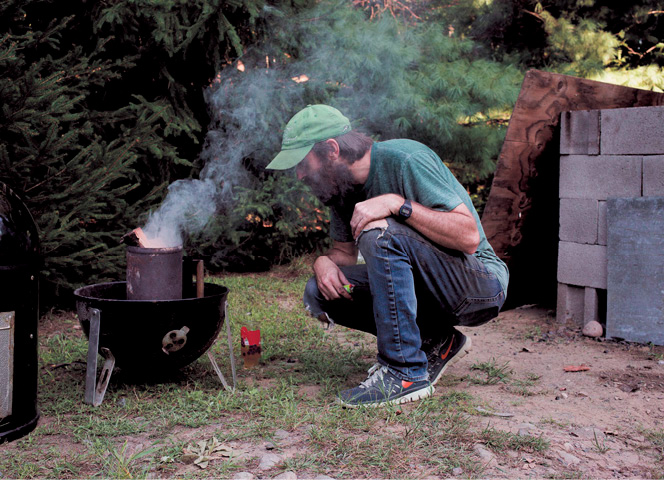
- When the charcoal in the chimney is white, dump it into the base of the smoker.
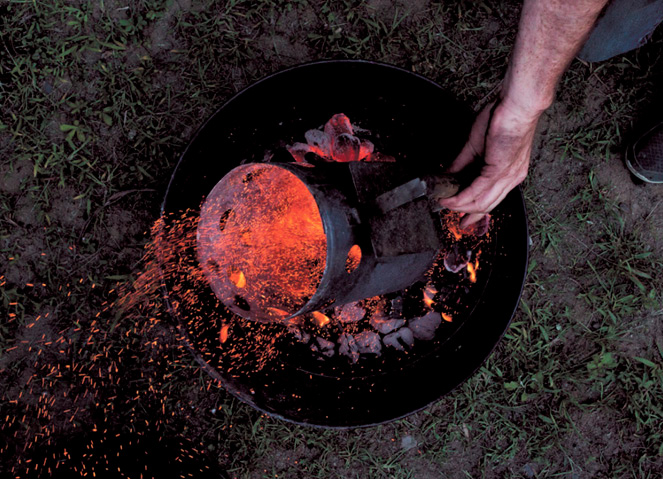
- Fill the basin with hot water and wait 10 to 15 minutes for the smoker to stabilize at 250F.
- The smoke should be a bit translucent (never white and billowy) and have the faint smell of fruitwood. (I like to start off pretty strong, and then let it fall back naturally as the sausages cook.)
- Put the sausages in the smoker, ideally all on the top rack, because its hotter and smokier up there.
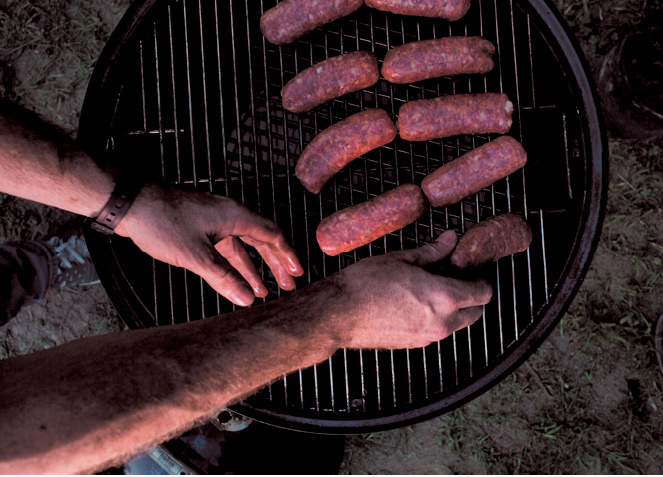
- At this point you can walk away, but keep an eye out for consistent smoke. If there isnt enough smoke after about 20 minutes, give the charcoals and wood a stir.
- After 35 to 40 minutes, turn the sausages so theyre uniformly colored.
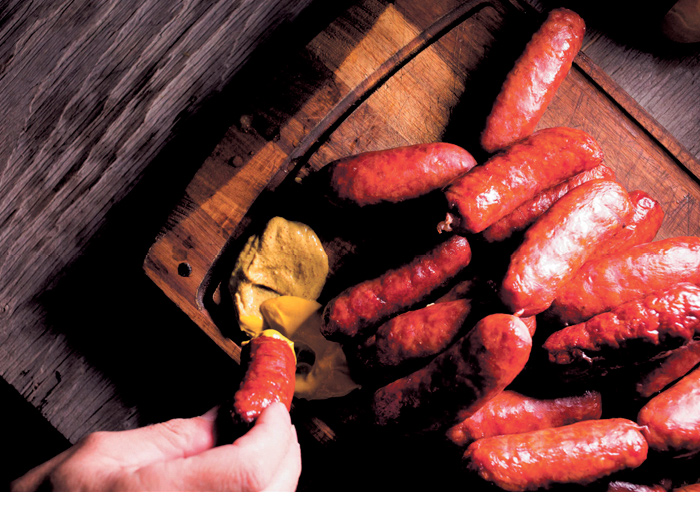
- After another 15 minutes, feel the sausages to see if there is some action going on under the skin. If the fat is bubbling, theyre done. If not, give them some more time, but not so much that they start to shrivel.
- Once the sausages are done, remove them from the smoker and serve. These are best dipped in mustard while they are still piping hot. You can also put them on a hot dog bun and add a bunch of greens and pickles to make a super sausage, which is all anyone really needs for a complete meal. And if you have any leftovers, theyre as good refried the next day as they are eaten cold, summer-sausage-style.



